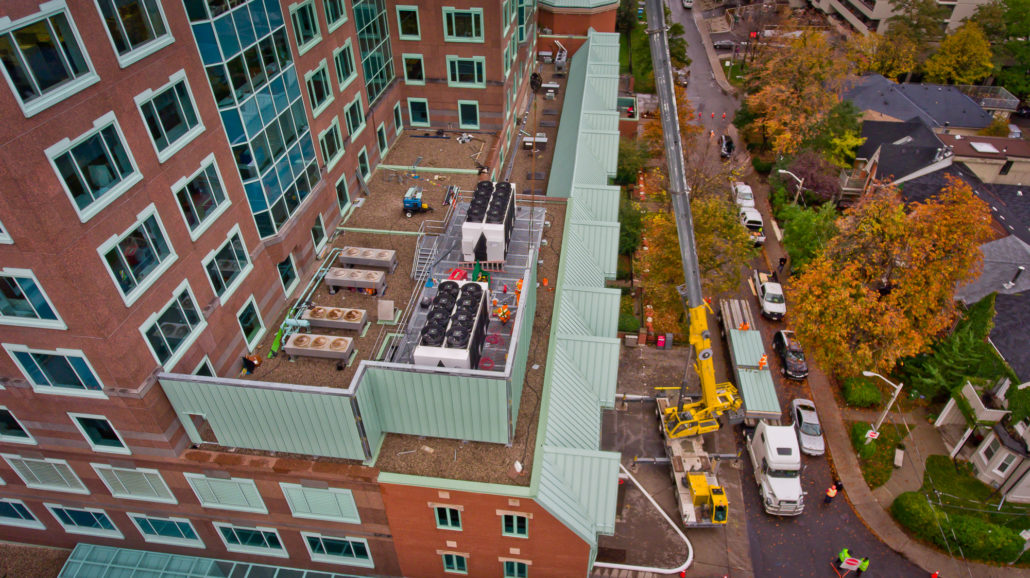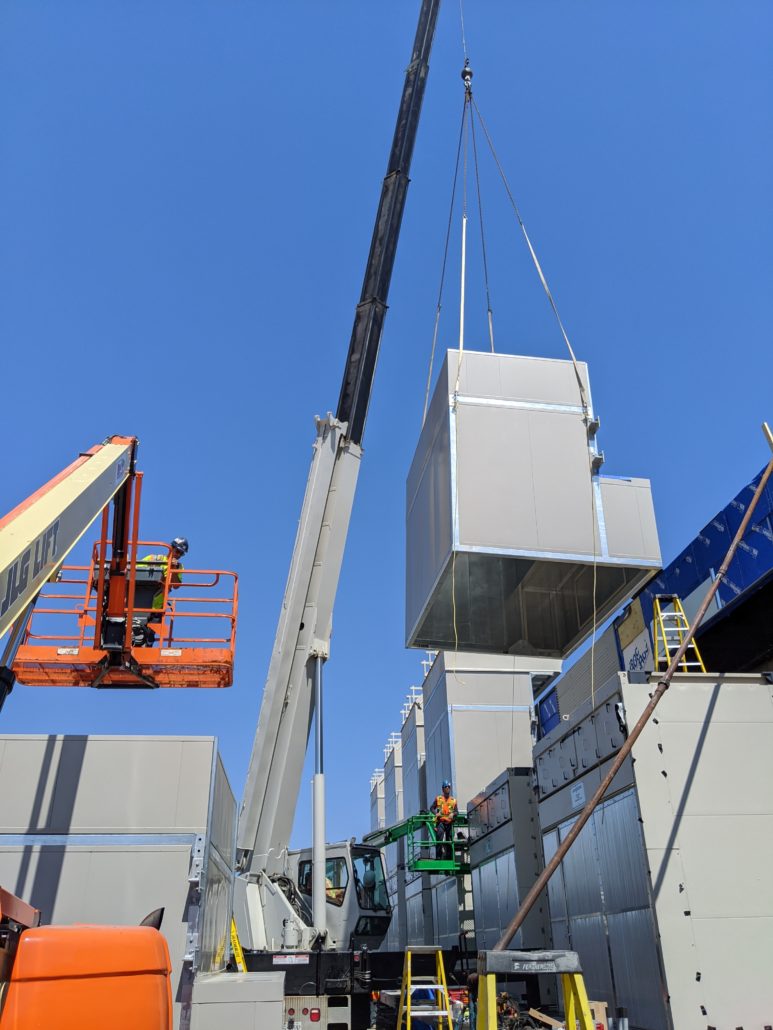We live in a data hungry world and our appetite is increasing by the day. The demand for faster and more reliable data processing is growing exponentially and shows no signs of abating. Everything from cloud computing and mobile data traffic to artificial intelligence, the so-called Internet of Things—where our cars, fridges and smart watches are connected to the web in ways that were once the stuff of science fiction—is fueling the exponential growth of Big Data as developers rush to get new data centers permitted, built and operating. A resultant hurdle in this sector is the ability to service the growing demand with a dwindling supply of available real estate. Though data center owners and operators try to avoid costly city center locations for their facilities, the need for reliable and redundant fiber optic connections and power infrastructure commonly results in facility locations situated close to densely populated residential areas.

With greater data demand and limited real estate comes a plethora of challenges—including unwanted mechanical noise across data centers.
From and outdoor noise emissions perspective, data centers require high levels of cooling and standby power, often supplied by large arrays of outdoor cooling equipment and emergency generator sets, respectively. As these facilities grow in size and complexity, so does the scope and scale of (the often noisy) mechanical components needed to keep them operational. Combine this with their common proximity to residential neighborhoods, proactive measures need to be taken when considering the design and implementation of a new data center.
New technologies require faster processing
Just how quickly are we consuming data? As this article notes:
“… IDC forecasts the global datasphere will reach 175 zettabytes by 2025. To help you understand how big it is, let’s measure this amount in 128GB iPads. In 2013, the stack would have stretched two-thirds of the distance from the Earth to the Moon. By 2025, this stack would have grown 26 times longer.”
That same IDC report predicted that globally, 6 billion people a day would be interacting with data in some form by 2025, or once every 18 seconds. The expectation now is for data to be delivered instantaneously, wherever users happen to be, or however they prefer to consume it.

Emerging 5G telecommunications technology will only enhance that expectation and represents yet another stress on data centers. Then there’s bitcoin mining. As this article explains:
“Bitcoin mining requires specialized high performance hardware that can solve the computational algorithms at a high-speed, with accuracy and efficiency. The demand for this kind of hardware is going up exponentially each day. Along with the demand for this kind of specialized hardware, the growing demand for data centers to equip and to handle cooling of this kind of heat generating hardware is increasing.”
More data, more problems
The tremendous electricity required to power a data center creates substantial heat transfer across these facilities. Maintaining optimal server room temperatures—usually between about 21 and 25 degrees Celsius—necessitates the use of high-volume cooling systems, which could include Calibrated Vectored Cooling, a Chilled Water System, a Computer Room Air Conditioner or a Computer Room Air Handler (or a combination of systems).
The more servers, the more cooling equipment such as air handlers that are required to keep server rooms at optimal temperatures. That could mean installing dozens of air handlers—among other cooling components—across a facility to meet required specifications. Enter the potential for significant noise challenges.

Given the prevailing business model, it’s rare to see mechanical rooms contained inside a data center. Equipment is usually placed on the building’s exterior to maximize the available interior square footage. The goal is to accommodate more servers and related equipment. Therefore, having cooling equipment and standby power located outside the building is the preferred option, however this can often lead to exterior noise issues and subsequent non-compliance with local regulatory ordinances. At the state and provincial level across North America—think jurisdictions where regulatory noise legislation is strictly enforced such as Massachusetts or Ontario—resulting fines or charges can create significant legal challenges, or even disruption to facility start-up and/or operation.
That risk is further amplified if the data center is located near a densely-populated urban area—a far more frequent occurrence than in the past, as a growing number of downtown communities encroach on what were once industrial lands, or as buildings are rezoned in retrofit situations.
Mission critical—Mission possible
It’s important to note that when a noise issue arises with one mechanical component in a data center, it’s highly likely that several others will also exceed regulatory noise limits and require attenuation. In fact, a data center’s entire cooling or power generation infrastructure could fall out of compliance given the deeply interconnected nature of most mechanical systems, thereby requiring complex sound attenuation—a process that can frequently be challenging and time consuming.

But these are mission critical facilities. They need to be built and commissioned as fast as possible, and they simply cannot experience significant downtime—if any. Thus, if mechanical sound abatement is not proactively planned for and executed, the result could be major scheduling challenges over the course of a new data center project. As we’ll point out in a future case study outlining the steps we took to mitigate noise at a data center in Toronto, ON, careful coordination is needed to mitigate potential construction delays, operational disruptions, and other risks. A few key considerations would be as follows:
- Engage an acoustic consultant early in the process. A qualified acoustical consultant will outline all relevant regulatory guidelines, as well as assess potential noise impacts from planned mechanical infrastructure.
- Begin dialogue with a specialized noise control supplier early in the process. Once the acoustic assessment is completed, a reputable noise control engineering company will be able to begin conceptualizing noise control strategies that are optimal for the given site location, building constraints, and mechanical equipment limitations.
- Allow sufficient time for design collaboration. Our recent blog provides a good overview of the necessary steps to understand and develop a strategy to mitigate mechanical noise challenges. This methodology is fully applicable in a data center environment. One critical element is the opportunity to for engineered noise control suppliers to collaborate with other project stakeholders (e.g., mechanical consultants, structural engineers, architects, and equipment OEM’s). This will ensure there are no unforeseen setbacks during construction that may cause critical delays.
- Engage a noise control supplier that will provide more than just noise control. Given the pace at which data center projects progress, developers and builders need an agile partner that can not only manage the a potentially large volume of noise control components, but other key engineering and skilled trades linked to their implementation. Our data center case study explains how Parklane was required to deploy it’s full depth of technical and trades expertise to successfully mitigate a series of large custom air handlers under a compressed construction schedule. It was our agile engineering and fabrication expertise that was integral to supporting various structural, mechanical, architectural and thermal challenges that arose throughout the design and construction process. The result is a seamless and efficient delivery without impacting any critical construction milestones downstream in the project.
The benefits of specialized noise mitigation
When the objective is to provide server space to the likes of major tech companies such as Facebook, Google, Amazon or Microsoft, time is of the essence with little margin for error.
Thus, the key takeaway is that data center noise mitigation needs to be proactively managed and is best left to specialized firms. They’re the ones that have the in-house talent, technical depth and experience to strategize, design effective engineered solutions and then manufacture and install the required noise-control solutions.
In other words, these projects are not for the engineering feint of heart. Given the unceasing demand for data processing and the expectations of the data-driven companies that lease server space, data center owners are wise to work with their noise mitigation solutions provider to proactively attenuate unwanted sound and keep their facilities operational.
The Parklane Team
